
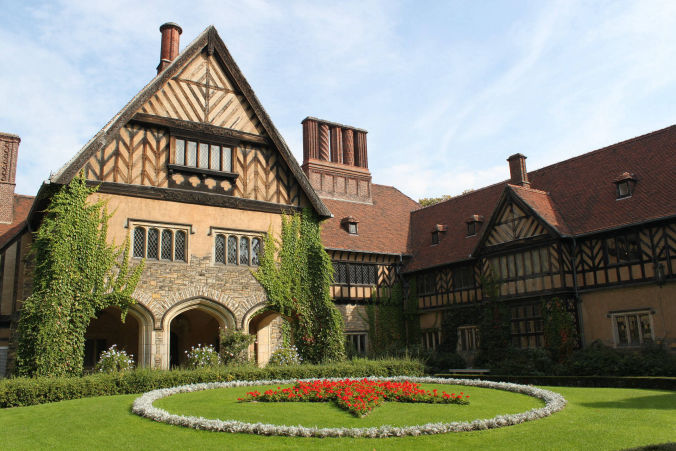
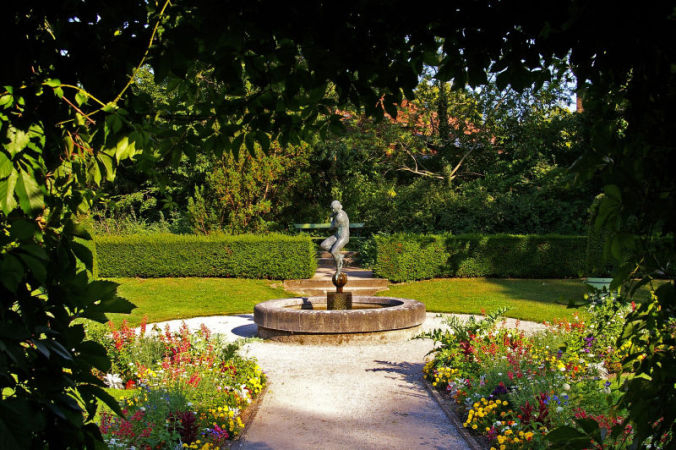
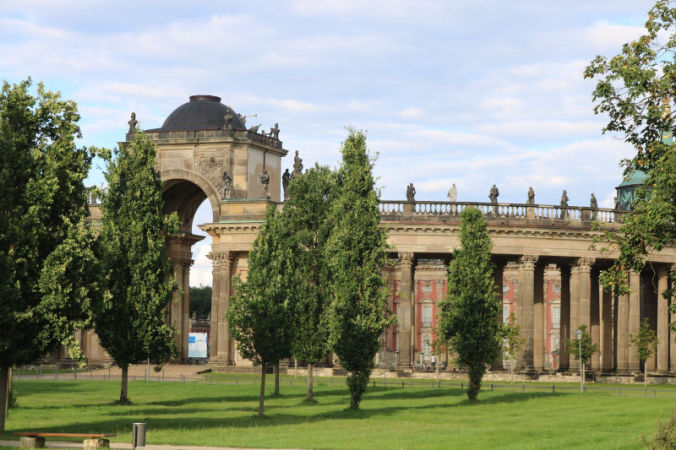
Early days
As early as the 7th century, the Heveller, a Slavic tribe, are said to have built a castle on the Havel River at the confluence of the Nuthe River, now central Potsdam.
The first recorded history of Potsdam (in writing) dates back to Emperor Otto III. (That's him in the picture). As a 13-year-old emperor, he kindly left the towns of Poztupimi et Geliti to his aunt Marthilde, with his signature and seal in 993. So Potsdam (then Potzupumi, Slavic for "under the oak trees”), officially dates back to 993.
The city of Potsdam was re-founded in 1050 by Margrave Albrecht I of Brandenburg (Albrecht the Bear) who built a stone castle at the Havel crossing, about 700 meters from the original Slavic castle. It was not until 1220, that a small service settlement developed at the foot of the castle. In 1304 Potsdam was first mentioned as a "Stedeken" (little town) and in 1317 as a castle and above all as a civitas (city) under the name Postamp.
The burgrave Friedrich VI., better known as Elector Friedrich I, was the first of the Hohenzollern royal family in Potsdam's history. In 1416 he laid the foundations for the later rise of Potsdam by constructing a bridge from the eastern mainland over the Havel to the island of Potsdam.
The rise of Potsdam is predominantly due to the absolutist period under Elector Friedrich Wilhelm. The Edict of Tolerance he issued in Potsdam in 1685 made it possible to attract migrants who repopulated the regions in Potsdam that had been thinned out by the Thirty Years' War due. Many persecuted Protestant Huguenots from France fled to Potsdam and elsewhere in Brandenburg. Around 20,000 people took up the offer and helped the economy to flourish with their specialist knowledge.
Potsdam under The Soldier King
Under the soldier king Friedrich Wilhelm I. the city became an important garrison location for the Prussian army. The increase in the number of inhabitants (including the soldiers) required the construction of new residential quarters as the first and second expansion of the city. The old houses in the old town were demolished and two-story half-timbered houses were constructed. by 1740 the number of inhabitants grew to 12,000, with every third resident in the military.
Frederick the Great
It was during the reign of Frederick II, that Potsdam became a royal seat. A very different figure to his father, Frederick was not a soldier king. This was made clear by his first official act: dissolution of the royal regiment.
Frederick however was a brilliant military campaigner who, in a series of diplomatic stratagems and wars against Austria, France and other powers, greatly enlarged Prussia's territories and made Prussia the foremost military power in Europe.
After the years at war, he began working on the city palace and converting the “desert mountain” into a terrace complex, laying the foundations on April 14, 1745 to Sanssouci Palace. In addition to the Sanssouci Palace , Potsdam was further expanded and new city gates and barracks were constructed. By 1779, 19,552 civilians and 8,192 military personnel lived in Potsdam.
Potsdam After Frederick the Great
The golden years of Potsdam somewhat ended with the death of Frederick the Great. His nephew Friedrich Wilhelm II. (1786-1797), eloquently known as the “fat Wilhelm”, seemingly decided to put the good life ahead of government affairs, and by the time of his death in 1797, Potsdam's economic situation had become critical. Under the reign of Friedrich Wilhelm III. (1797-1840) the situation failed to improve, and after the defeat of Prussia against Napoleon in 1806, the situation became even more catastrophic. It was only after 1814, when Napoleon was defeated, that a new era dawned in Potsdam.
The high point of construction activity in the 19th century
The art-loving Friedrich Wilhelm IV (1840-1861) became king and through him the Potsdam cultural landscape was further enriched. Early in life, he developed interests in architecture and the arts and later in life served as patron of several artists. Considered a "Romantic on the throne" he is generally considered to have had little time for government work. He held fast to his divine right for a long time and prevented important reforms due to his conservative nature.
End of the Hohenzollern
Potsdam's and indeed history thereafter were particularly shaped by military forces. After the death of Friedrich Wilhelm IV, his son followed as Kaiser Friedrich III. in 1888, however only ruled for 99 days until he was replaced by his son after his death: Wilhelm II. He ruled until 1918 and signed the “Declaration of War” on July 31, 1914 in the New Palace. Potsdam had 58,455 inhabitants in 1895. Around every seventh of these were members of the military. The last building of the Hohenzollern was the1913-1917 Cecilienhof Palace in. This marked the end of the era of the imperial family and in 1918 the last emperor of Potsdam fled into exile in Holland.
Potsdam after 1918
Potsdam lost its residence city status with the end of the Hohenzollern family, but remained loyal to it for a long time. For a long time they did not want to accept it and continued to call the city the royal seat. A date steeped in history is the “Day of Potsdam” on March 21, 1933, when Hitler bowed submissively to the Reich President General Field Marshal von Hindenburg in the Garrison Church in Potsdam and then shook hands. This happened on the occasion of the inauguration of the new Reichstag.
Potsdam in ruins
Potsdam was spared during the Second World War, but this changed at the end of the war. On April 14, 1945, Potsdam was reduced to rubble by British bombers. Thousands died in the hail of bombs.
Potsdam in the GDR
Great Britain, the USA and the Soviet Union met after Germany's surrender in Cecilienhof Palace for the Potsdam Conference. The so-called Potsdam Agreement defines the democratization, demilitarization, denazification, decartelization and decentralization of Germany and went down in history.
Potsdam became a district town in 1952 under the leadership of the SED and a new construction should take place and a more beautiful Potsdam emerged. Unfortunately this also meant that the hated Prussian townscape had to be removed. As a result, many houses and buildings that were drowned in the hail of bombs were simply blown up. For this purpose, prefabricated buildings and high-rise buildings based on socialist models were built in these places. Due to the numerous facilities, the population grew to 130,000 over the years.
Potsdam today
After reunification, Potsdam is flourishing again. In 1990, Potsdam was declared a World Heritage Site by UNESCO. The maintenance of the historical buildings and gardens is now in the foreground. The historical center is also being rebuilt. Since the fall of the Wall, there has been a consistent approach to the historical city plan.




Potsdam, on the River Havel is the capital and the crown jewel of the state of Brandenburg, and not an actual part of the city of Berlin. Potsdam lies 24 km from the German capital, and is the most popular day trip from Berlin.
Most of Potsdam's many beautiful landmarks were constructed during the eighteenth and nineteenth centuries while the city was the royal residence of the Prussian kings.
During the reign of King Frederick William 1, the 'Soldier King' , Potsdam developed into both a garrison city and the royal seat of the Prussian kingdom. His famous son Frederick II constructed the renowned Sanssouci Palace as well as the monumental Neues Palais in the Park Sanssouci.
Potsdam was severely damaged by allied bombing and soviet artillery in 1945, however, thankfully, most of the palaces in the Sanssouci Park remained unscathed.

Visit the fascinating castles of Sanssouci and Cecilienhof and hear about the city's unique Prussian history on this 6-hour private guided tour.
€315/6hrs
Avoid the Crowds with a private tour of Potsdam. Explore the
city with a knowledgeable, experienced guide!
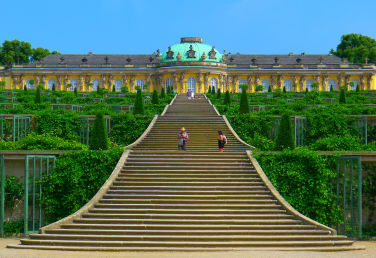
Summer palace of King Frederick the Great
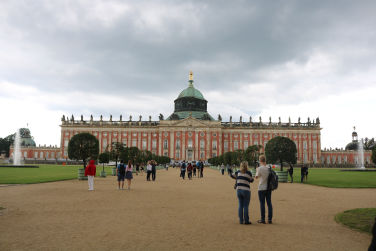
Largest 18th-century structure in stunning Sanssouci Park
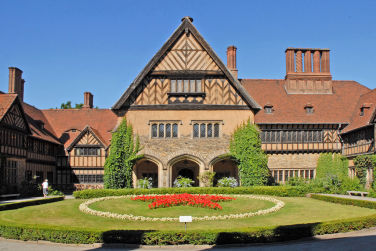
Site of the Potsdam conference at the conclusion of WW2
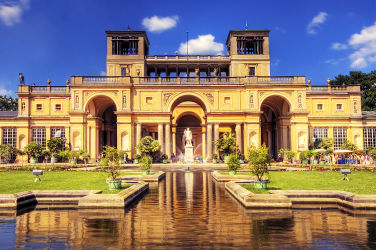
Spectacular garden palace situated in Park Sanssouci

Explore the beautiful grounds of the "Friedenskirche"
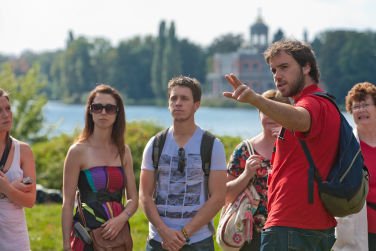
Discover Potsdam with memorable and passionate guides
Our private guided Berlin tours can be customized to suit your requirements. We will organize an itinerary specifically suited to match your wishes and desired tour length.

The comprehensive Berlin highlights tour...
4 hrs €240/Group

Condensed Private guided tour for those with limited time...
2 hrs €150/Group

Your private half-day tour to stunning Potsdam...
6 hrs €315/Group

Half-day private guided tour with your specialist guide...
4 hrs €245/Group
Private Tours Berlin have provided exceptional private Berlin guided city tours to anyone travelling to Berlin, Germany since 2007.
Our speciality is delivering relaxed, attentive and fully private Berlin city tours that go beyond the typical crowded tourist traps to reveal the real Berlin that us locals know and love. We do this with a flexible approach that gives our guests the best service and experience.
Book today and enjoy the peace of mind of touring with one of Berlin’s highest rated tour operators.
All our experiences are private, meaning exclusively for you.
Tours that are tailored to you, so you can make the most of your time in the city.
Our experienced guides are Berlin’s finest, ensuring a memorable tour.
Discover Potsdam with a knowledgeable, experienced guide and see what others miss!